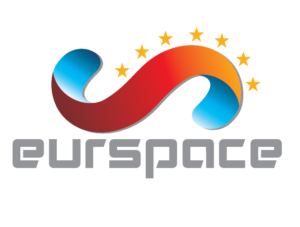Profile
| Company Name | |
| Professional field | |
| PIC code | 10007 |
| Address | 123A NY |
| City | NY |
| Country | United States |
| Phone | |
| Organization Type | |
| Contact Person | Smith Charles |
| Position (contact person) | Smith Charles |
| Email (contact person) | |
| About us | The Evolution of Nursing Education: Flexibility and Innovation for Modern Healthcare Nursing is a dynamic profession that requires a robust foundation of knowledge, practical skills, and adaptability. As the demands of the healthcare industry continue to evolve, nursing education must also transform to prepare students for complex roles in patient care, advocacy, and leadership. One of the most significant advancements in nursing education is the introduction of flexible and competency-based learning models, which are designed to meet the unique needs of diverse learners. Programs like flexpath assessments help are leading this transformation, offering nursing students innovative pathways to achieve their educational goals. The Growing Importance of Flexibility in Nursing Education Traditional nursing education often follows rigid structures, which can be challenging for students who need to balance academics with personal or professional responsibilities. With the rise of non-traditional learners, including working professionals and parents, the demand for more flexible education options has grown significantly. Flexibility in nursing education allows students to learn at their own pace and schedule, enabling them to tailor their academic journey to their unique circumstances. For instance, programs such as nurs fpx 4055 assessment 1 provide students with adaptable frameworks to meet critical learning objectives while accommodating their individual needs. This approach not only enhances accessibility but also empowers students to take control of their education. Competency-Based Education: A Modern Approach Competency-based education (CBE) focuses on mastering specific skills and knowledge areas essential for professional practice. Unlike traditional time-based learning models, CBE allows students to progress as soon as they demonstrate competence in a particular area. This model aligns perfectly with the practical and outcome-oriented nature of the nursing profession. Nursing programs that integrate CBE often include assessments that simulate real-world scenarios, ensuring that students are well-prepared to handle clinical challenges. For example, nurs fpx 4905 assessment 4 emphasizes critical-thinking skills and clinical decision-making, which are crucial for effective nursing practice. By focusing on competencies, nursing education ensures that graduates are not only academically prepared but also ready to excel in demanding healthcare environments. Technology: Revolutionizing Nursing Education Technology plays a pivotal role in modernizing nursing education, offering tools that enhance learning and accessibility. From virtual simulations to online courses, technology enables students to engage with interactive and immersive content that mirrors real-life clinical situations. Programs like nurs fpx 4035 assessment 2 leverage technology to provide comprehensive assessments that evaluate both theoretical knowledge and practical skills. Virtual simulations, for instance, allow students to practice procedures in a controlled environment, helping them build confidence and competence without the risk of patient harm. Additionally, online learning platforms offer resources that make nursing education more inclusive, reaching students in remote areas who may not have access to traditional educational institutions. Bridging Theory and Practice Through Clinical Experiences A cornerstone of nursing education is the seamless integration of classroom learning with hands-on clinical practice. Clinical placements provide students with the opportunity to apply theoretical knowledge in real-world settings, develop critical skills, and gain firsthand experience in patient care. Programs such as nurs fpx 4065 assessment 1 emphasize experiential learning, preparing students to transition smoothly from the academic environment to clinical practice. These placements also foster essential skills like communication, teamwork, and adaptability, which are vital for success in the nursing profession. Furthermore, clinical experiences expose students to the complexities of healthcare systems, helping them understand the interconnected roles of different professionals and the importance of interdisciplinary collaboration. Challenges and Opportunities in Nursing Education While nursing education has made significant strides in adopting flexible and competency-based models, challenges remain. One of the most pressing issues is ensuring equitable access to education for all aspiring nurses. Financial barriers, limited technological resources, and the availability of clinical placements can hinder students’ ability to complete their education. Addressing these challenges requires innovative solutions, such as partnerships between educational institutions and healthcare organizations, increased use of virtual simulations, and expanded financial aid programs. |



